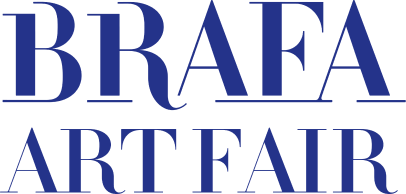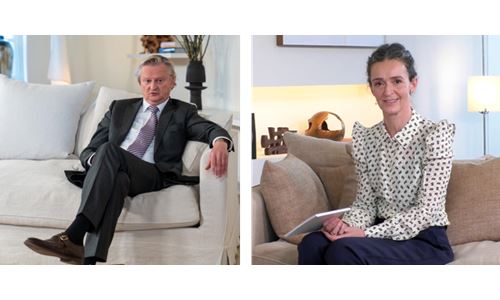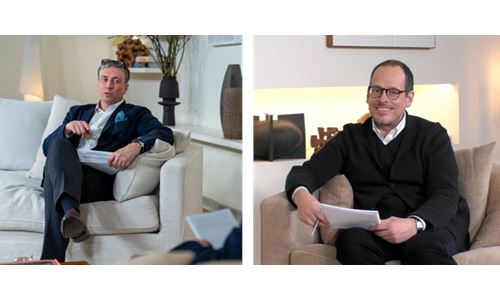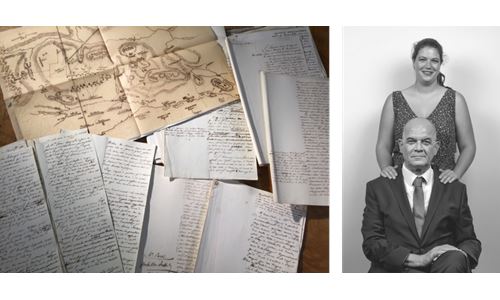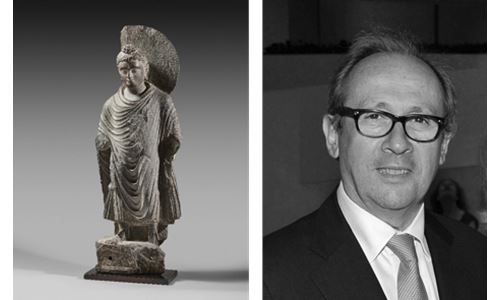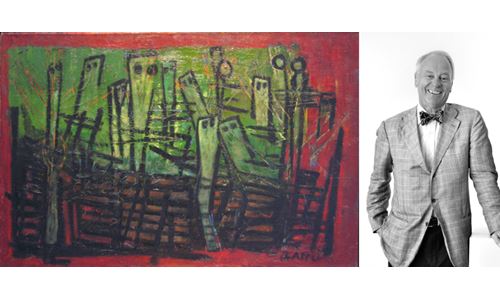ART Talks
BRAFA loves culture, and loves to share it !
In the context of ‘BRAFA in the Galleries’, we invite you to livestream four fascinating talks given by participating gallery owners. These talks will take place on Wednesday 27, Thursday 28, Friday 29 and Saturday 30 January 2021 at 6 PM (CET).
Register now via the link under the presentation text of each talk.
PROGRAMME
DAS KOMPLETTE PROGRAMM HERUNTERLADEN
27/01/2021
De kunstmarkt, vandaag en morgen
Watch the interview HERE
Francis Maere is Ondervoorzitter van BRAFA en Voorzitter van ROCAD.be en Els Bracke is Hoofdredacteur van de Nederlandstalige editie van COLLECT Arts Antiques Auctions en hoofdredacteur van de Nederlandse uitgave COLLECT Kunst & Antiek Journaal
Is de kunsthandel behoedzaam momenteel? Waarom BRAFA in the Galleries en wat mag het publiek verwachten? Wat heeft een BRAFA handelaar in de eerste plaats te bieden? Welke acties ondernemen de galerijen om in contact te blijven met zijn klanten? Hoe zit dat bij de handelaren thuis? Hoe adviseert een kunsthandelaar zijn/haar klanten? Hoe ziet u de toekomst van de kunsthandel?
Opgenomen in Gent op de zetel van DELEN Private Bank
27/01/2021
Le marché de l’art aujourd’hui : situation et perspectives
Watch the interview HERE
Harold t’Kint de Roodenbeke est Président de la BRAFA et Christophe Dosogne est Rédacteur en Chef et Editorialiste de l'édition francophone de COLLECT Arts Antiques Auctions
Comment le marché de l’art a-t-il réagi devant cette crise ? Pourquoi l’initiative BRAFA in the Galleries et qu’est-ce que le public peut en attendre ? Qu’est-ce que les galeries d’art ont mis en place pour garder le contact avec leurs clients ? Comment un galeriste conseille-t-il ses clients ? Quel avenir pour le marché de l’art dans l’ère post-COVID ?
Enregistré au siège de DELEN Private Bank à Gand
28/01/2021
The manuscript of the Battle of Austerlitz dictated and corrected by Napoleon I
TALK given in French - Watch the talk HERE
Founded in 1975 and located now in Paris, the gallery Arts et Autographes is strongly specialized in historical documents. Then over the years more, they expanded into the musical and fine arts. Jean-Emmanuel Raux has become an expert in manuscripts in France. With the arrival of his daughter, Alizée Raux, the gallery takes a new turn by diversifying into modern and contemporary art paintings. Alizee’s goal is to associate a manuscript of a painter with his painting to show the theoretical part of his art, his character, his friendships and his relationships.
To mark their first participation in BRAFA, the French gallery Arts & Autographes is presenting an exceptional manuscript on the battle of Austerlitz, dictated and corrected by Napoleon I. This precious document is composed of a manuscript of 74 pages dictated by the Emperor to General Bertrand in Sainte Hélène, and annotated in several places in Napoleon I’s hand. It is accompanied by a map of the battle of Austerlitz drawn by General Bertrand on tracing paper.
The battle of Austerlitz, also known as the ‘battle of Three Emperors’ took place on Monday 2 December 1805, (11th frimaire, year XIV of the French Republican Calendar), in a place now situated in the Czech Republic. After nine hours of fighting, Napoleon I’s Great Army – despite its inferiority in numbers – beat the forces of the Third Coalition, which dissolved following the battle. This event is considered Napoleon’s tactical masterpiece and is still taught today in military schools. A great preface to the bicentenary celebrations of Napoleon I’s death to be held in 2021!
29/01/2021
The Art of Gandhāra
TALK given in French - Watch the talk HERE
The Christophe Hioco Gallery specializes in the ancient statuary art of India and the Indianized world, including Southeast Asia and the Himalayas. The gallery's selection criteria are as rigorous as those of the greatest museums and great attention is paid to the originality, quality, provenance and authenticity of each pieces. This uncompromising approach to the artworks acquired have enabled the gallery to develop trusting relationships with the world's greatest collectors and museums. The gallery has participated for many years in major Asian art events: the Biennale Paris and the Parcours des Mondes in Paris, the BRAFA in Brussels and Asia Week in New York. The Christophe Hioco Gallery is also a member of the S.N.A. (Syndicat National des Antiquaires Négociants en Objets d'Art Tableaux anciens et modernes de France), the ROCAD.be and the Asia Week New York Association, Inc.
The Gandhāra Valley and its extensive surrounding territories are the cradle of an original art style largely inspired by Helleno-Roman and Parthian art, adapted for Indian religions, almost exclusively Buddhism. In discussing its origins, we must go back to the adventures of Alexander the Great in Central Asia, up to the very gates of India (330-326 B.C.E.) and to the founding of Greek colonies such as Ai-Khanoum on the Oxus (Amu Darya), located on the modern border between Afghanistan and Tajikistan.
The caravan trade helped spread Western influences, even if the genesis of the synthetic art of these regions retains some obscure aspects. It developed over a vast area, from the Muslim republics of Central Asia up to the north of Pakistan. Many regional styles co-exist. Documentation from the 1st century B.C.E. is rare and inconclusive. The apogee of this art, formerly called “Greco-Buddhist” art, an incorrect but image-evoking description, dates from the 2nd or 3rd century of our era. Beautiful works were created one after the other until Islam arrived at a point in time that varies depending on the region concerned.
Standing Buddha, Schist, Ancient region of Gandhāra, circa 3rd century, H 67 cm
30/01/2021
Encounters and friendships with the CoBrA Masters
TALK given in ENG - Watch the talk HERE - password: brafa
DIE GALERIE, founded by Peter Femfert in 1979, is devoted to the most significant 20th century artistic movements and cutting-edge contemporary creative art. DIE GALERIE focuses primarily on modern art, with particular emphasis on Surrealism, the CoBrA group, and contemporary figurative art. The gallery does not only organize exhibitions in its own space in Frankfurt am Main but also in prestigious museums, cultural institutions and international galleries. Its activities include publishing and art consultancy. The gallery frequently participates in the most important art fairs in Europe, Asia and the United States.
Gallery owner Peter Femfert and gallery manager Elke Mohr discuss their personal encounters and friendships with some of the major CoBrA artists such as Corneille, Asger Jorn, Karel Appel, Pierre Alechinsky, Lucebert and Carl-Henning Pedersen. They will be showing work by these artists at the gallery in Frankfurt am Main during BRAFA IN THE GALLERIES.
Their talk gives a very personal insight into the life and work of a number of CoBrA artists and conveys the enthusiasm gallerists feel when collaborating with artists they admire.
Peter Femfert describes his friendship with Corneille (1922-2010) for example, the Dutch artist who was instrumental in introducing him to CoBrA at the beginning of his career in the early 1980s. He recalls his numerous visits to Corneille’s studios and homes in Paris and Macerata, a path that led to his meeting with Pierre Alechinsky, the only CoBrA artist still alive.
Peter and Elke also discuss the unforgettable moments they’ve spent in artists’ studios even after the artist’s death – when there is just a family member left to talk about their work.
For them, their role as mediators between often idiosyncratic artists and collectors is a vital part of their work as gallerists.
Karel Appel, Begging Children, 1948, Oil on canvas, 70 x 104 cm

